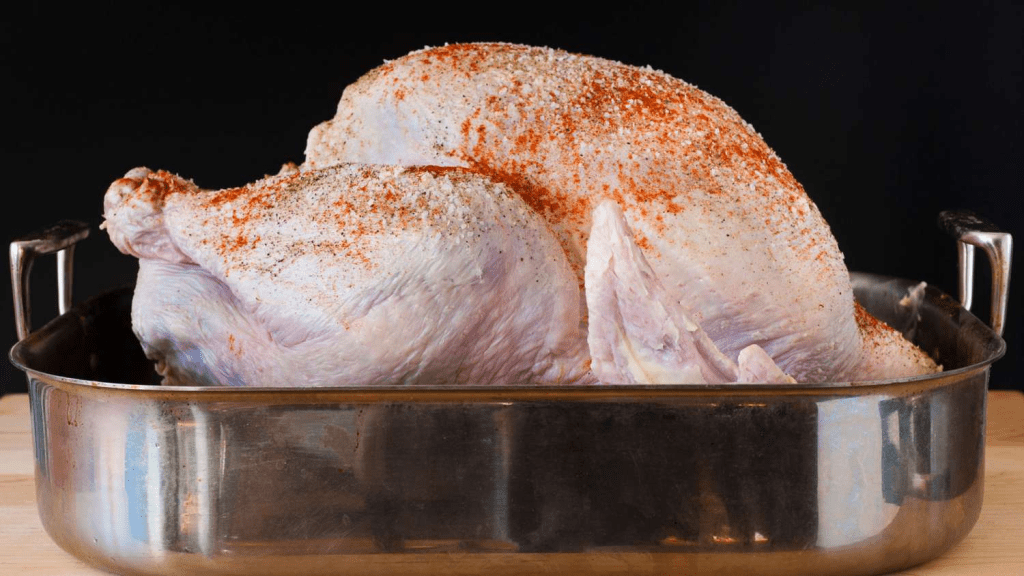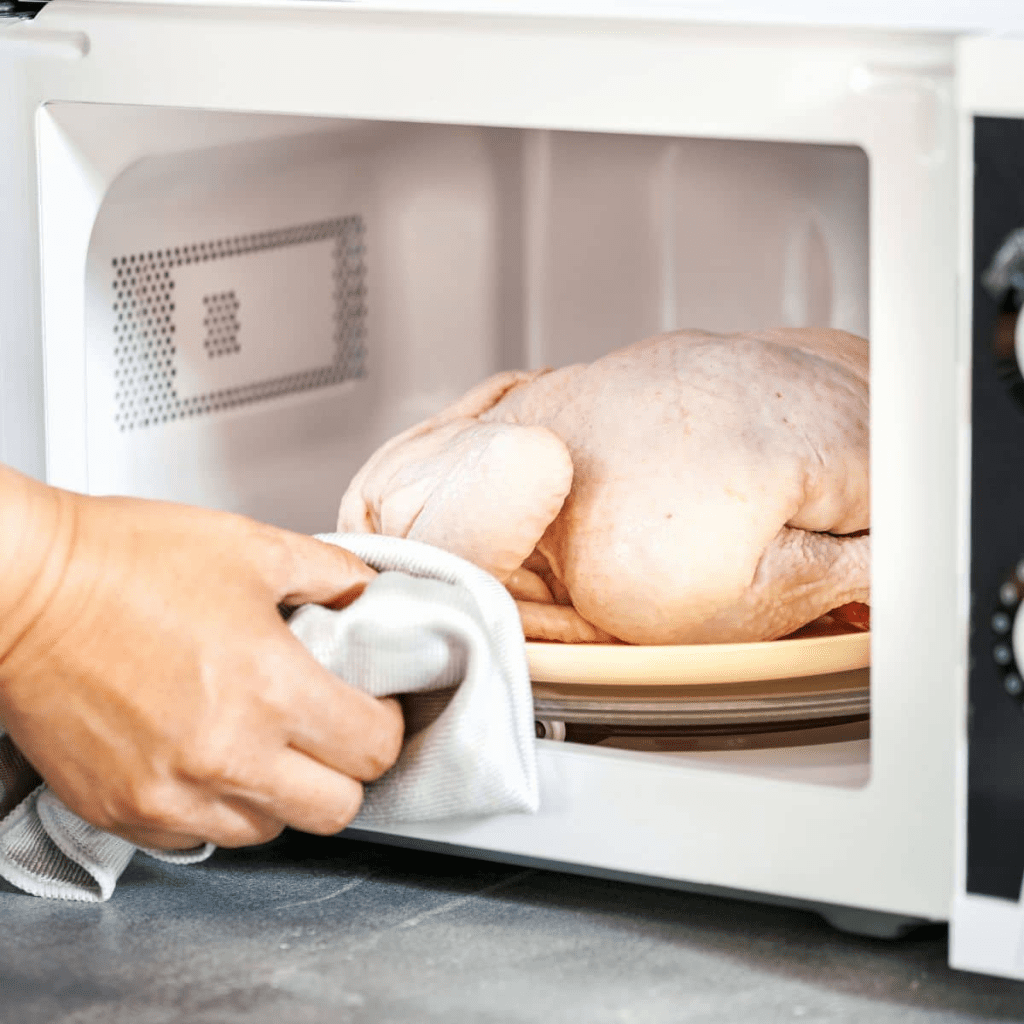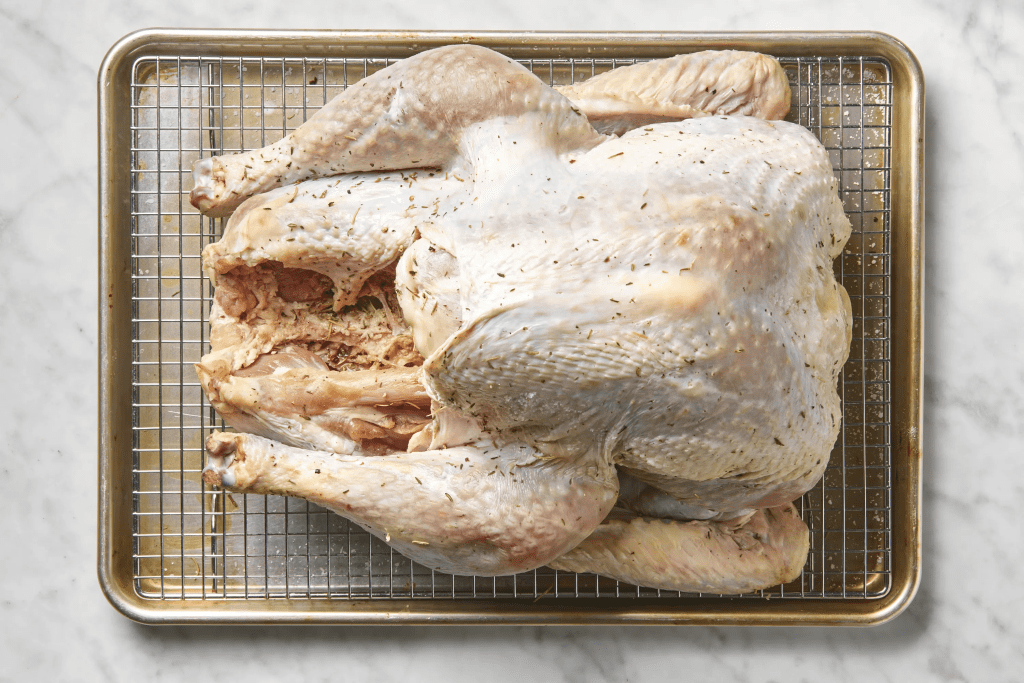Preparing a turkey for a holiday feast is an exciting task, but thawing it safely is crucial for both taste and health. One common question that many home cooks have is whether it’s safe to leave a turkey out on the counter to thaw overnight. While your mother-in-law may suggest this method, it’s important to understand the risks and food safety concerns that come with it. In this article, we’ll explore the best ways to thaw a turkey safely and why some methods might be riskier than others.
Understanding the Importance of Safe Thawing

When it comes to preparing a turkey, thawing it properly is just as important as seasoning it correctly. The primary concern when thawing poultry, including turkey, is food safety. If not done correctly, thawing can place the bird in the “danger zone” — a temperature range between 40°F and 140°F where bacteria can thrive and multiply rapidly. This is where foodborne illnesses like salmonella and campylobacter can come into play, making proper thawing essential to a safe meal.
The Risks of Thawing a Turkey on the Counter
Although leaving a turkey out on the counter to thaw overnight might seem like a quick and easy solution, it can lead to serious health risks. The outer parts of the turkey may begin to warm up to room temperature, while the inner sections remain frozen. This uneven thawing creates the perfect environment for bacteria to multiply, which increases the risk of foodborne illness.
Leaving a turkey at room temperature for hours, especially overnight, can expose it to temperatures in the danger zone for an extended period. According to food safety experts, this practice is highly discouraged, as bacteria can double in number every 20 minutes under these conditions.
Safer Methods for Thawing Your Turkey
To ensure your turkey is safe to cook, it’s important to use one of the following safer thawing methods:
1. Refrigerator Thawing: The Safest Option
The safest and most recommended method for thawing a turkey is refrigerator thawing. This process requires planning ahead, but it ensures that your turkey stays at a safe, controlled temperature throughout the thawing process.
To thaw a turkey in the fridge, simply place it in its original packaging on a tray or in a shallow pan to catch any potential drips. The general rule of thumb is to allow 24 hours of thawing time for every 4-5 pounds of turkey. For example, a 12-pound turkey will require about three days to thaw completely in the refrigerator.
2. Cold Water Thawing: Faster, But Requires Attention
If you’re short on time and need to thaw your turkey more quickly, cold water thawing is a faster alternative. For this method, submerge the turkey (still in its original packaging) in cold water. Be sure to change the water every 30 minutes to keep the temperature low and ensure the turkey remains in a safe range. This method typically takes about 30 minutes per pound, so a 12-pound turkey will take about six hours to thaw in cold water.
While cold water thawing is quicker, it requires more attention than refrigerator thawing, so make sure to stay on top of the water changes.
3. Microwave Thawing: A Quick Option for Small Turkeys

For smaller turkeys, you can use the microwave to thaw them. This method works well for birds under 10 pounds but requires immediate cooking once thawed. Follow your microwave’s instructions for defrosting poultry, but remember, the turkey should not sit at room temperature for any period after thawing, as this could lead to bacterial growth.
Expert Recommendations: What the Professionals Say
Food safety organizations, including the USDA and the CDC, strongly advise against leaving a turkey on the counter to thaw. They recommend using the refrigerator, cold water, or microwave methods to ensure the bird stays at a safe temperature. Experts emphasize that while thawing on the counter may have been a common practice in the past, modern research and a better understanding of foodborne bacteria highlight the dangers of this approach.
According to the USDA, poultry should never be left out at room temperature for more than two hours — or just one hour if the ambient temperature is above 90°F. This includes thawing, cooking, and storing poultry.
Debunking Common Myths About Thawing Turkey

Some people believe that leaving a turkey out to thaw is acceptable, particularly in cooler climates or during winter months when indoor temperatures are lower. However, even in cooler environments, your home’s interior temperature may still be high enough to allow bacteria to grow.
Another common myth is that cooking the turkey thoroughly will kill any bacteria that might have grown during improper thawing. While cooking can kill most bacteria, it does not eliminate toxins produced by certain bacteria, like those from salmonella or campylobacter. These toxins are heat-resistant and can make you sick even if the turkey is fully cooked.
Conclusion: Prioritize Safety When Thawing Your Turkey
In conclusion, while leaving a turkey out on the counter to thaw overnight may seem like a time-saver, the risks associated with this method far outweigh any benefits. For the sake of food safety and your health, it’s best to follow one of the recommended thawing methods: refrigerator thawing, cold water thawing, or microwave thawing. Planning ahead will not only help ensure your turkey is properly thawed but will also give you peace of mind knowing that you’re preparing a safe and delicious meal for your family and friends.
By understanding the risks and following the best practices for thawing, you can ensure your holiday meal is both safe and delicious, without any last-minute stress. Happy cooking!


